
What is mindfulness for Complex Regional Pain Syndrome (CRPS)? How can it help me with my chronic pain condition? This article will help to answer those questions and hopefully teach you how to practice mindfulness for your CRPS, so you can try to practice mindfulness meditation on a regular basis as an alternative, self-care pain management tool.
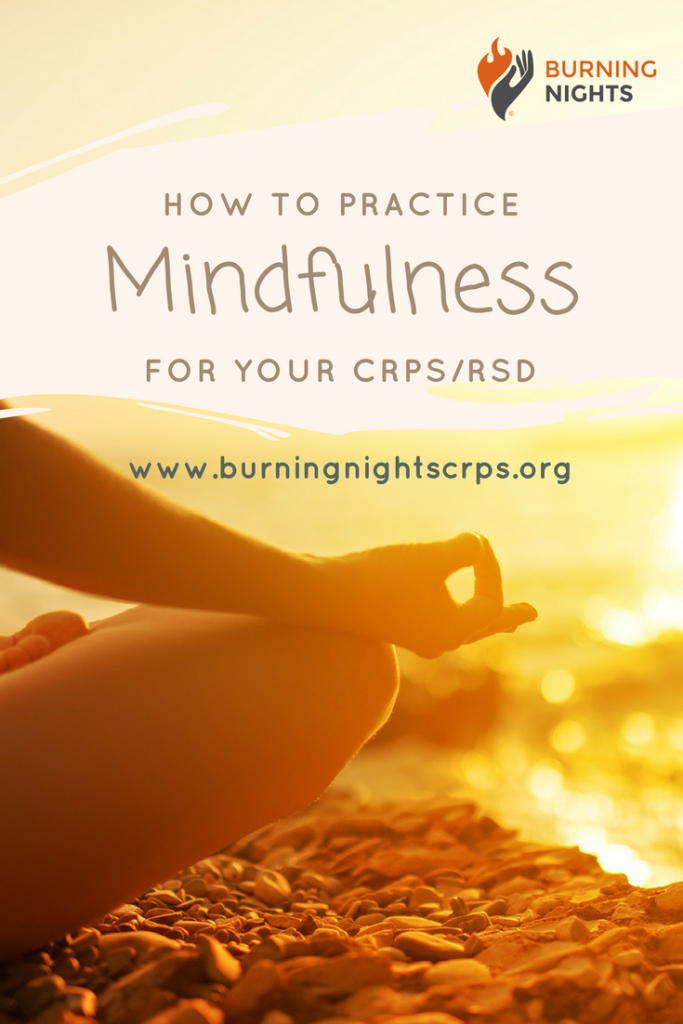
What is Mindfulness for CRPS or Chronic Pain?
Mindfulness is a psychological process centred on being in the present moment and fully aware of your surroundings, including sight, sound, taste, and not over reacting to thoughts, feelings or sights. Mindfulness is paying full attention of yourself, noticing everything that is happening in your surroundings.
Mindfulness is considered to be a simple form of meditation. The dictionary definition of Mindfulness is:
- The quality or state of being conscious or aware of something
- A mental state achieved by focusing one’s awareness on the present moment, while calmly acknowledging and accepting one’s feelings, thoughts and bodily sensations, used as a therapeutic technique
It is the second part of the definition that really is involved in Mindfulness as an alternative therapy. An example of what this can mean for sufferers of persistent pain is:
- Think of what is happening to you right at this very moment, e.g. you may have a pain flare up that you are in right at this moment of reading this or you have recently been diagnosed with a rare chronic pain condition like CRPS.
- Now using these examples, consider what your normal thoughts are or what they would be. Perhaps you could be really angry and upset that this has happened to you, you might blame someone else for your diagnosis or your pain flare up. These sorts of thoughts are seen as negative and the practice of Mindfulness for your CRPS wants you to realise what you are thinking and calmly accept how you feel and accept your pain. So, if you are in a pain flare up then you try and accept the amount of pain you are feeling, without anger.
The simplest way of explaining mindfulness is that you are here in the now and you are aware of yourself and what is going on around you. You need to think and be 'mindful' of you and your surroundings. Mindfulness means waking up to the smells, sights, sounds, and tastes of the now - i.e. in the present moment.
It is thought that pain comes in two different parts:
- The actual pain that comes from your injury, condition, illness, or the nervous system in CRPS patients
- Your mind's response to your illness or the burning, stabbing pain from CRPS - e.g. "I hope it doesn’t get worse! When will it stop? I need a break from all this pain! What am I going to do if my pain relief doesn’t work?"
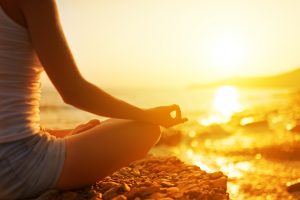
TO THE TOP
What Are The Benefits of Mindfulness for CRPS?
- You can see situations a lot clearer
- Realise, slow yourself down or even stop recurring thoughts and actions
- React more successfully to problematic circumstances
- Provide yourself with more focus
- To help you feel better mentally and physically
A, B and Cs of Mindfulness
According to Juliet Adams, the Founder of Mindfulnet.org & Director at A Head for Work, there is the ABC of Mindfulness:
- A: Awareness – Becoming more AWARE of what you are thinking and doing and what is going on in your mind and body.
- B: "just Being" with your experience – Avoiding the tendency to respond on auto-pilot and feed problems by creating your own story.
- C: Seeing things and responding more wisely – By creating a gap between the experience and our reaction to, we can make wiser choices
You will find two terms often associated with each other: meditation and mindfulness. Used together, they can be an effective way of coping and dealing with your persistent pain. Having Complex Regional Pain Syndrome (CRPS), apart from being the most excruciating chronic pain condition, can make you feel totally isolated and alone.
How Can Mindfulness Work for Patients with CRPS?
As for how Mindfulness can work for patients living with CRPS, it can eventually help you cope easier with your persistent pain and feel less stress and distress. Intrusive thoughts, such as how your CRPS began or came about or the event that caused it, can not only influence your pain, but also have an impact on your quality of life. Understanding all the factors that relate to managing your CRPS can eventually help you (Lohnberg, J.A. & Altmaier, E.M. 2014).
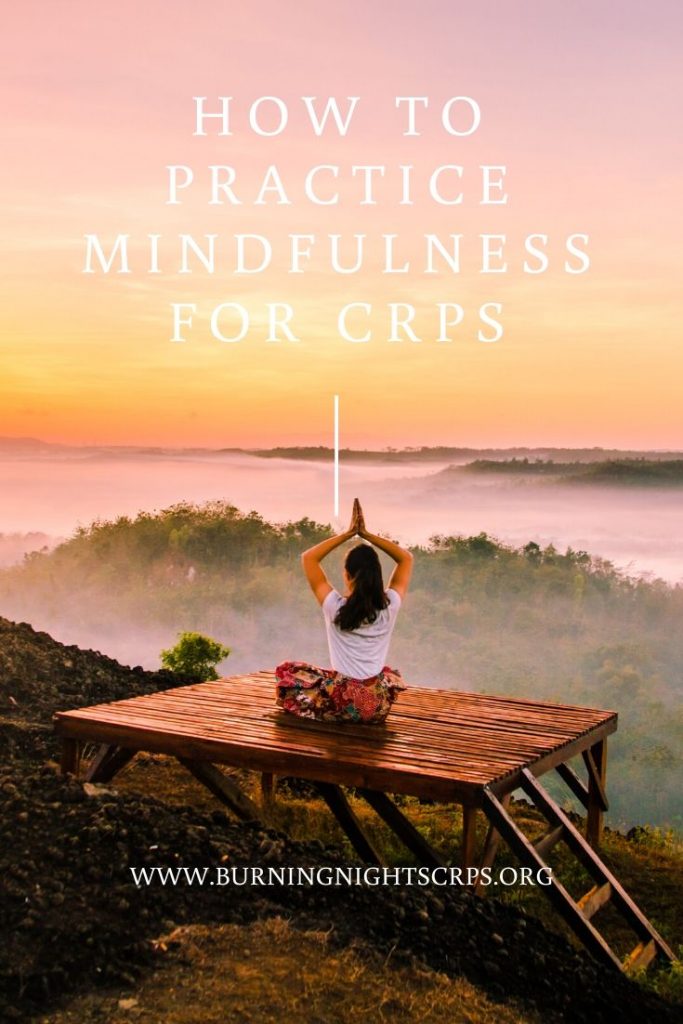
TO THE TOP
What are the Advantages of Practicing Mindfulness for CRPS?
A study with 30 CRPS sufferers looked at using acceptance-based coping methods and found that it could result in lower pain during the same day, increased activity the following day (Cho, S. et al. 2013). Read the study here.
Rosenzweig, S. et al. (2010) concluded that mindfulness-based stress reduction treatments did have a varied effect on persistent pain, as well as a better quality of life and psychological well being. By being more aware of yourself and of your surroundings in the present can not only help you understand yourself much better and also help you to enjoy the world around you.
Veehof, M.M. et al (2016) stated in their conclusions that: "…acceptance-and mindfulness-based interventions for chronic pain are, on the whole, moderately effective on a number of beneficial outcomes, especially in the long term."
Mindfulness Exercises
When you first practice Mindfulness, prior to doing any exercises you should try and make sure you and your surroundings are prepared. Once you are confident in your Mindfulness exercises then you should be able to practice them wherever you are - at work, as a passenger in the car, bus or train.
Surroundings Preparation:
- Put on some loose, comfortable clothes
- Turn off your mobile and TV
- Make sure you either have calming music or a silent room whichever you prefer
- If you are going to lie on the floor put your head on a pillow or cushion

Exercise 1a – Breathing
- Sit yourself in a comfortable position or lie down
- Breathe as you would do normally – Calm, slow, not laboured
- Begin to pay total attention on your breathing – How are you breathing? Is it slowly, quickly, short, etc?
- Look at your chest and think about how your breathing is making your chest rise as you breathe in and fall as you breathe out
- It is quite normal and natural for you to begin to lose your concentration on your breathing, so to bring your attention back to your breathing, slowly think back to how your chest is rising and falling – How many breaths are you taking in and breathing out?
- If you can, try and practice this exercise three times a day
Exercise 1b – Breathing Space (via Breathworks Mindfulness)
- This video gives you a good 3 minute breathing space to yourself and you can do this mindfulness exercise in any posture. New Project from Breathworks on Vimeo.
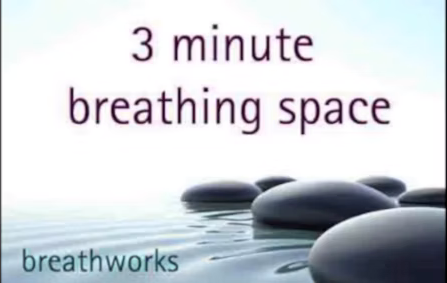
Read more about Breathing Exercises.
Exercise 2 – ‘Noticing 5 Things Exercise’
- Pause for a moment
- Notice five things you can see
- Notice five things you can hear
- Notice five things you can feel in contact with your body (e.g. your feet in your shoes, the air on your face, your back against the chair and the fabric of your clothes touching your legs)
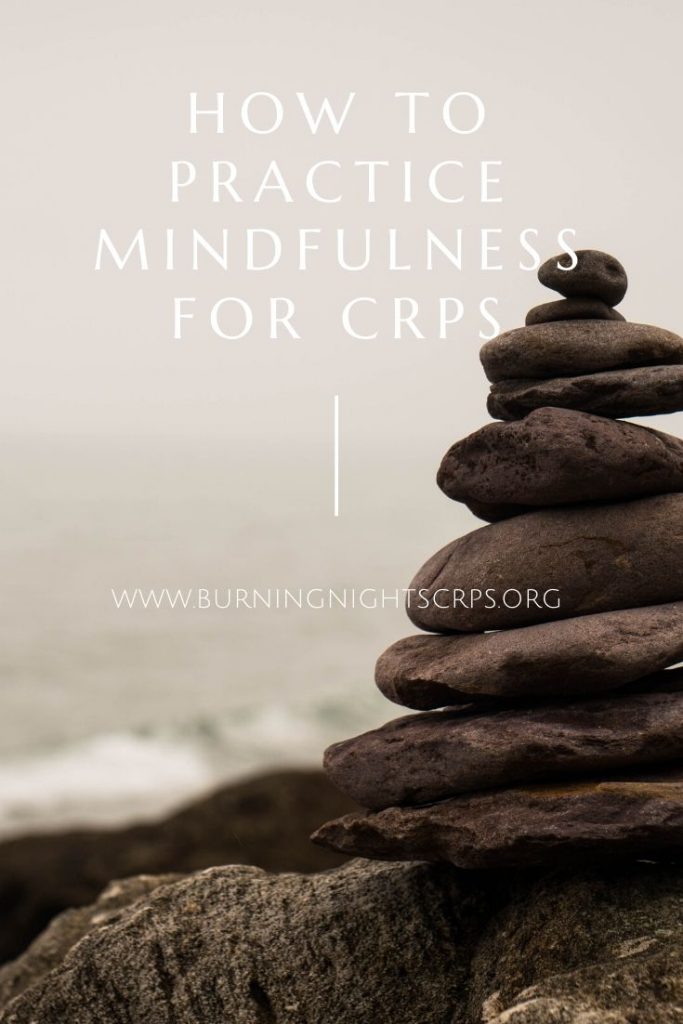
Exercise 3 – Body Scan
This is a classic Mindfulness exercise that many courses will likely teach you. It takes around 20 minutes.
In this exercise, we will go from the top of the head downwards to the toes. If you prefer, you can go the other way; from the toes upwards to the top of the head. It all depends on what you feel comfortable with, similar to our Relaxation Techniques.
- First, prepare your surroundings. Remember, if your mind wanders, just slowly bring yourself back to the area of your body that you were being mindful / aware of.
- Think about your body and notice the feelings that are there – Can you feel your body in contact with the floor?
- Begin thinking of your various parts of your body – Don’t think "Oh that hurts" or "I have an itch there" but bring your thoughts to each area of your body.
- Now, beginning with the top of your head, can you detect any feeling at all? Is it relaxed? Painful?
- Going downwards, include the whole of your head – If you are sitting down, do you feel it’s weight on your shoulders? If you are lying down, do you feel the heaviness on the pillow?
- Notice other sensations – As you are being aware of your head, can you feel any ease, pain, ache or your pulse in your forehead? How about your eyes, nose, cheeks, mouth and chin? Do you have warm cheeks? Cold nose perhaps?
- When you get to your ears, can you hear any sounds?
- Gently move downwards towards your neck – Do you have any tension? Are you aware of strong muscles?
- Again, move slowly downwards to your shoulders – If you are sitting down, are you shoulders in contact with the chair? If you are lying down where is there contact between the floor and the shoulders? Do you have any aching muscles? Do you have stress in them?
- Now, become aware of both your arms, then to your wrists, onto your hands, palms, fingers, then right to your finger tips – Do you have pain anywhere? What does it feel like? Don’t dwell on how painful it is rather try and think of softness.
- If you feel your mind wandering away, bring your focus back to your area. If you find this difficult then focus on your breathing, how are you breathing is in gentle and calm?
- After your arms and hands, bring your attention to your chest and ribs – Can you see how your chest rises and falls with every breath in and out?
- After your chest and ribs, continue going downwards towards your toes – Make yourself aware of each body area and focus on what is happening in that area. If there is pain in an area, try to not focus on how much it hurts, instead think of bringing softness to that area.
- When you get to your toes, take a couple of breaths and bring your attention to your whole body – Scan your body to see if there’s an area that you don’t feel calm in. Focus on that area and see if you can reduce the tension or pain. Do you feel more happier? More aware?
Mindfulness for CRPS and Chronic Pain can be a worthwhile pain management tool to help you with your thoughts, feelings and eventually help you cope with everyday life while having chronic pain or a chronic pain condition like CRPS. Please seek medical advice from your doctor before starting any new treatments, including counselling.
Hopefully, this article has helped you to understand how mindfulness can help you and your CRPS and chronic pain, as well as how mindfulness for CRPS and chronic pain works, and how it could help you in your every day life. Mindfulness is an important tool and should be used alongside your other treatments, not instead of.
Please be aware that, as with most treatments and tools, mindfulness doesn't always work for everyone and it is not a cure. Practicing mindfulness meditation can assist you in your self-care routine to help you manage and cope with your CRPS, persistent pain, mental health issues, such as depression or anxiety.
Find Out More
Useful Resources for Mindfulness for CRPS
There are many website and resources for Minfulness for CRPS and persistent pain out there. Below are a few that are a good place to start, with good podcasts, books and resources.
Read Our Other CRPS & Chronic Illness Articles
Burning Nights CRPS Support has written a number of articles on living with Complex Regional Pain Syndrome and chronic illness. Here are some you may be interested in:
*Burning Nights CRPS Support is a registered charity. We are not doctors or specialists and therefore cannot make any diagnosis, provide treatment, etc. You must speak to your doctor or healthcare professional before starting any new treatment. This help is not meant to replace your current treatment regime or medication. If in doubt please contact your doctor or pain specialist first. We are not responsible for any subsequent actions you may take.*
*Burning Nights CRPS Support is not responsible for any external websites.*

TO THE TOP
Last Updated: 13/07/2020






